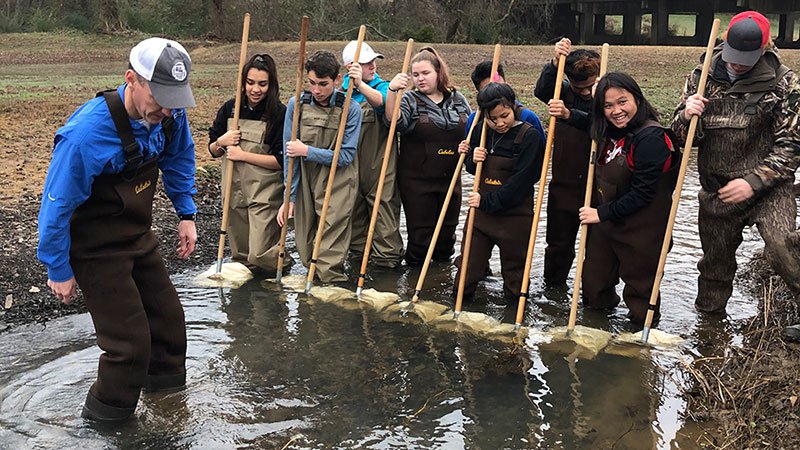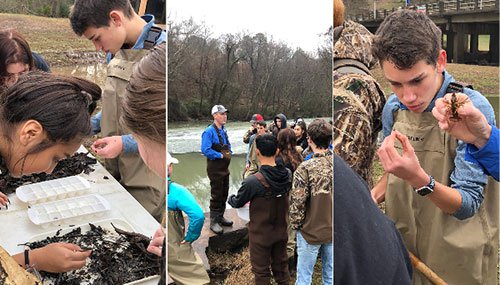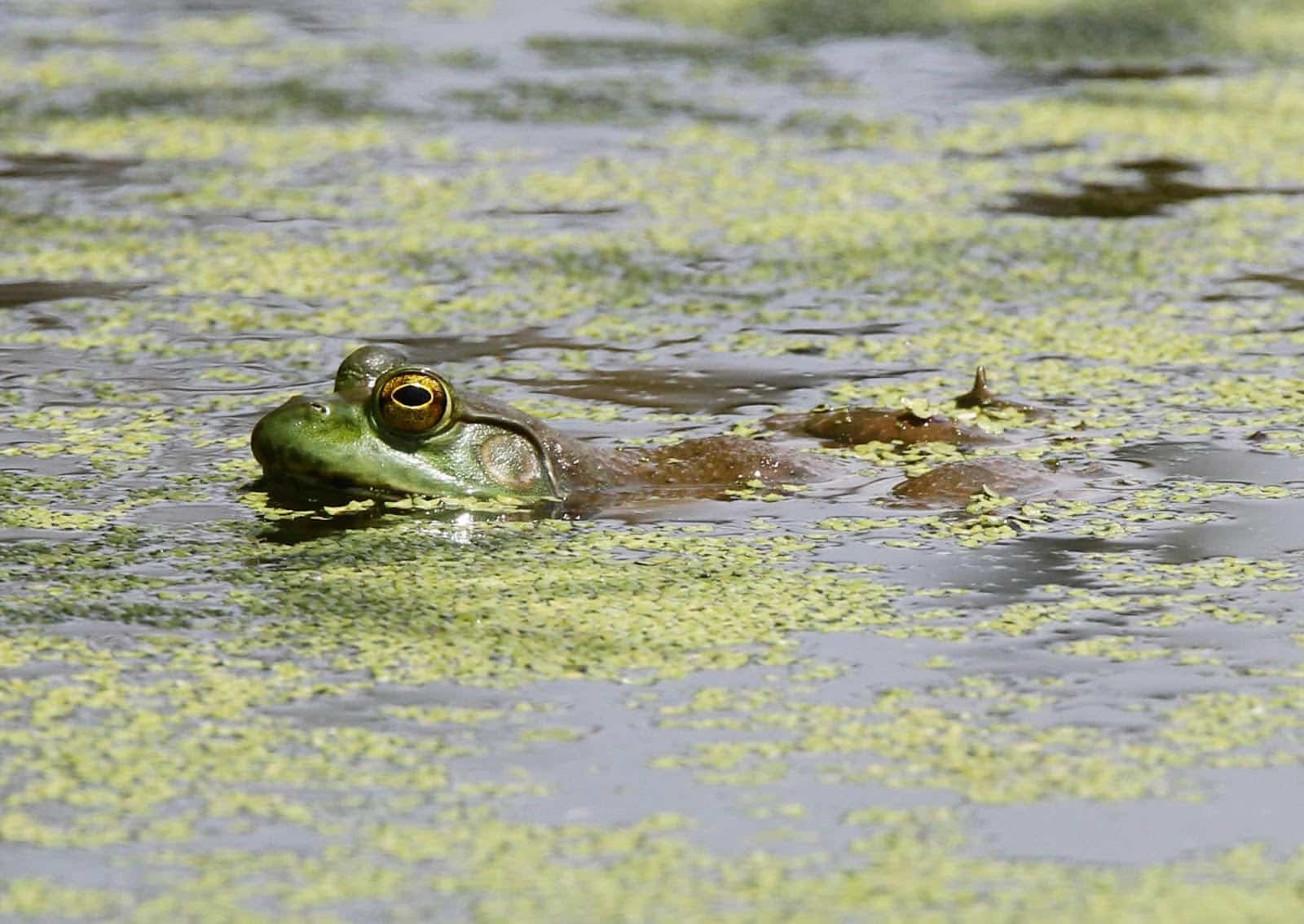Diversity key to success with Clarksville High School Stream Team
ON 06-17-2020

June 17, 2020
Randy Zellers
Assistant Chief of Communications

CLARKSVILLE — There’s no indicator of a healthy system as meaningful as finding a multitude of different individuals working together to make things better.
Of roughly 2,541 students enrolled in Clarksville last year, more than 650 spoke a language other than English as their first language. Many are members of families who traveled from Thailand, Vietnam, and other Asian countries, while a large number also came from Latin America for the area’s combination of affordable housing and plentiful jobs in industrial agriculture.
“Clarksville is a town of about 9,000 people, and at our high school about 40 percent of our students speak a language other than English,” said Libby Sanderson, agriculture teacher at Clarksville High School who serves as the advisor for the local Future Farmers of America and Arkansas Stream Teams Chapters. “We had 26 countries and 12 languages represented last year at our school.”
Sanderson, whose background is in agriculture as well as forestry, is one of the few agriculture teachers in Arkansas who has incorporated a natural resource curriculum into her programming. She also has made it a point to learn to greet each student in their native language.
“When they see me trying, then they try harder and we really learn that we’re not all that different,” Sanderson said.
One of her students last year came to Sanderson during the school year excited that his father also had a background in plants and agriculture.
“It turns out, his father used to be a plant inspector back in Asia before they had to move because of war in their home country,” Sanderson said. “And I’ve heard from a few of my students that the landscape of Ouachita Mountains and Arkansas River Valley remind them a lot of home. Many people in Thailand hunt for subsistence, so they enjoy hunting here, they just have to learn the rules we go by.”
Anderson said she also has formed a bond with many of her Latin American students. An avid turkey hunter, she has made friends with some students who are from Sonora, where many hunters travel to hunt the Gould’s subspecies of wild turkey.
“We have a lot in common; just not language,” Sanderson said.
Enrolling the FFA class into the Stream Team program was a natural fit for many of the students, whose interests were so heavily focused on the outdoors and agriculture.
Matthew Irvin, Stream Team coordinator for the Arkansas Game and Fish Commission in Russellville, says the chapter itself is an excellent example of how diversity enriches an environment.
“It’s amazing to see how many different cultures and backgrounds have come together in this group, all surrounding nature and agriculture,” Irvin said. “Just like we strive to see diversity in the species along the waterways where we work, this group is all the better for the many different cultures represented in it.”
For their Stream Team project, Clarksville High School FFA has adopted Spadra Creek in Johnson County. Spadra Creek starts up in the Ozark National Forest near Ozone and drains into the Arkansas River at Lake Dardanelle. In addition to being a fantastic fishing area, it is an excellent stream to learn about biodiversity and what water quality indicators fisheries managers look for when assessing the health of an aquatic system.
“In January, the team took water samples and performed a monitoring activity called a ‘bug kick,’ where members shuffle their feet to dislodge insects and other macroinvertebrates, then catch them in a seine,” Irvin said. “The variety and types of insects found can tell you a lot about the system. Some species only are found where the water is healthy, while others are more tolerant of pollution or siltation.”
According to the results of the survey, the section of Spadra Creek sampled by Clarksville continues to rate an “excellent” score for aquatic habitat value.
Not only is the monitoring work important to help biologists keep track of possible changes in the aquatic environment, but Irvin is also hopeful that the message of clean water and a healthy environment will continue to ring true throughout the students’ lives. Once a person has invested the time to learn more about an area, they are more passionate about protecting it. And with the diversity of the cultures represented in the group, the message of conservation can travel on, despite barriers imposed by language or cultural differences.
Visit www.agfc.com/streamteam to learn more about how you can get involved in keeping our waters healthy.
Visit the Clarksville FFA Facebook Page to learn more about this great example of teaching stewardship through hands-on education.
Recent News

Arkansas bullfrog season underway
Apr. 15, 2024

Flooding closes Sulphur River access
Apr. 12, 2024
Subscribe to Our Weekly Newsletter E-mails
Don’t miss another issue. Sign up now to receive the AGFC Wildlife Weekly Newsletter in your mailbox every Wednesday afternoon (Waterfowl Reports are published weekly during waterfowl season and periodically outside the season). Fishing Reports arrive on Thursdays. Fill in the following fields and hit submit. Thanks, and welcome!
